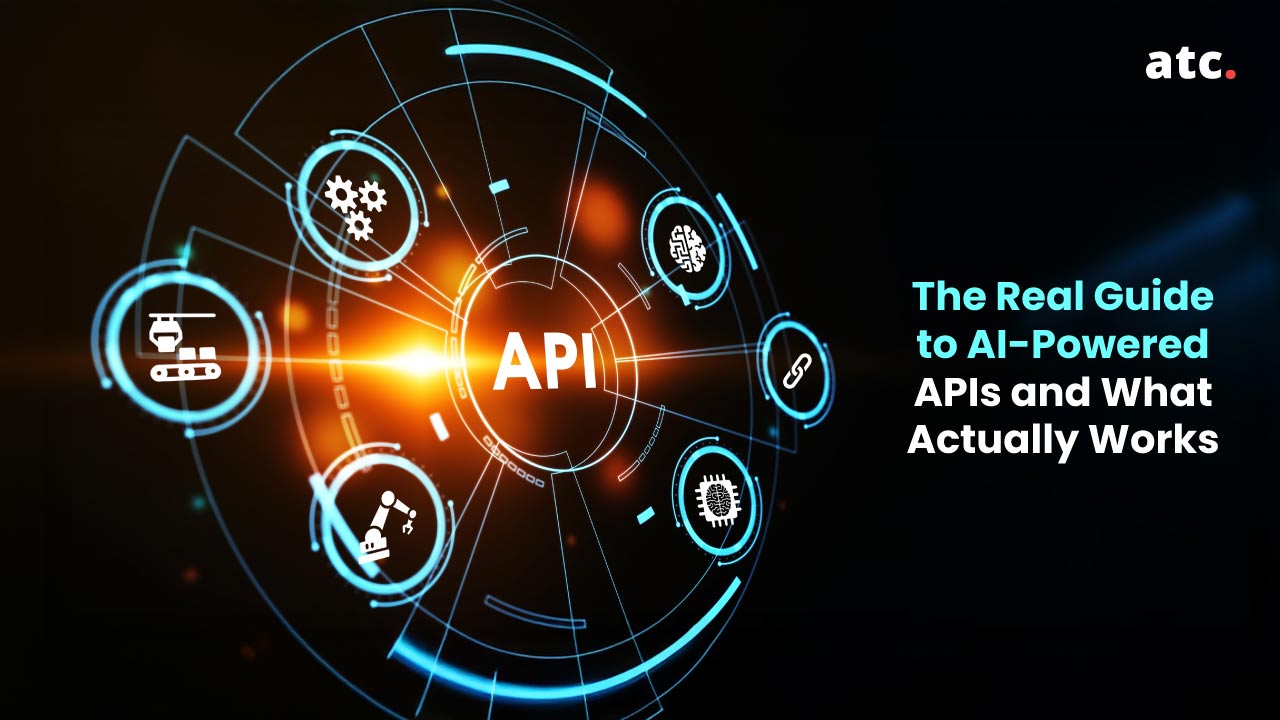Subscribe to the blog
Are you new to the Scrum methodology? Do you want deeper insights into what Scrum events or ceremonies are? If yes, this article is for you. Scrum is undoubtedly the best Agile methodology that organizations of all sizes can adopt.
However, to ensure that your product development team stays efficient and agile, you need to be thorough with each of the four Scrum events and artifacts. And this is what we’ll be talking about.
We’ll discuss each Scrum event in detail. So, let’s get started.
What is Scrum?
Basically, Scrum is a framework that helps develop, deliver and sustain products within a complex environment. This framework is widely used in IT companies for enhancing the software development process.
What makes Scrum so popular and powerful?
It’s the three pillars of Scrum that make Scrum so adaptable and powerful. Here are the three pillars of Scrum:
Transparency
Transparency is the most important pillar of Scrum. Every person involved within or outside the Scrum team should be transparent about the work they do. This way, each person will know what’s happening around them. Consequently, there won’t be any communication gaps, and you can expect better results.
Inspection
This pillar ensures that everyone involved in the Scrum inspects the Scrum artifacts, which are:
- Sprint backlog
- Product backlog
- Team board
The motive is to ensure that each artifact is aligned with the sprint goal.
Adaption
This pillar is directly related to the previous one. In case, during the inspection, an aspect deviates from the goal of the Scrum, the process is immediately changed. It simply means that the team adapts to the change in demands of the customers.
Here’s an illustration of the three pillars of Scrum:
What is a sprint?
A sprint is a time-boxed period within which a specific amount of work (sprint backlog) is to be completed.
You can also consider a sprint as a project within itself that lasts for no longer than a month. Usually, the time period of a sprint is decided at the start of the project. Also, the length of the sprint depends on the Scrum team’s maturity, change frequency, and project complexity.
Sprints are always of short duration. This enables the teams to deliver more work projects frequently while incorporating regular feedback. It also gives the flexibility to change how the product is being crafted/developed.
In the end, every sprint should have something working to be released and demonstrated in the sprint review.
What are Scrum roles?
Before we jump into the Scrum events, you need to know about the common Scrum roles. This will help you understand the Scrum events thoroughly:
Scrum Master
You can think of a Scrum Master as the team leader. He/she is the point of contact for the Scrum team in case it needs guidance or help. The Scrum Master also helps the product owner handle and create a good backlog. Furthermore, a Scrum master ensures the best implementation of Agile.
The Development Team
The dev team is a self-organized and cross-functional team that delivers the project based on the requirements listed by the product owner. Each member of the team focuses on improving quality and enhancing their skills to deliver the best.
Product Owner
The product owner is a member of an Agile team that creates the backlog and helps the team understand the requirements. He/she also ensures that the stakeholder gets a quality product.
Let’s now move towards the real meat.
What are the four Scrum events or ceremonies?
Here we’ll talk about the four Scrum events in relation to the following:
- Attendees of the Scrum events
- Scrum events duration
- Purpose of the Scrum events
- Tips for making the most of the Scrum events
This way, you’ll be able to understand the importance and uniqueness of each Scrum event.
- Sprint Planning
Check the image below to understand sprint planning better:
Who attends Sprint Planning?
Everyone, including the product owner, Scrum Master, and the development team, attends this event. All of these roles should be mandatorily present to ensure an effective sprint planning meeting. Also, anyone can attend this meeting as a speaker or an observer, if asked to do so.
What’s the duration of the Sprint Planning Meeting?
Sprint planning happens at the start of newsprint. This event is time-boxed to 8 hours for a month-long sprint. However, for 2-week sprints, 2 hours are more than enough. The key here is to organize well and make the most of the given time.
What is the purpose of Sprint Planning?
The sprint planning meeting helps set a goal or roadmap for the sprint. The team:
- Finds the item with the highest priority from the product backlog.
- Clears any doubts.
- And adds the items to the sprint backlog.
The main idea is to set a sprint goal that the product owner agrees with and create a list of workable items, aka sprint backlog.
It’s the Scrum Master who facilitates the meeting. He/she also ensures that the team pays attention to the deliverables and the desired outcome is met. In case there’s any disagreement, the Scrum master uses conflict resolution techniques for dealing with deadlocks.
Before the sprint planning starts, the product owner must keep the product backlog ready. Here’s what he/she needs to take care of:
- Refining requirements
- Adding the essential details
- Adding acceptance criteria
How to make the most of Sprint Planning
Here are some tips to ensure effective and efficient sprint planning:
- Always refine the backlog items before the commencement of sprint planning. Refinement usually includes estimating the backlog items, adding more details, and breaking large items into smaller ones.
- If a backlog item requires discussion and clarification, it shouldn’t be included in sprint planning. Such an item indicates the story is not ‘Ready’ yet.
- The splitting of tasks should be done during the sprint planning.
- During the sprint planning, you should consider holidays, leaves, or any other activity that might affect the sprint goal.
- Daily Scrum or Daily Standup
Check the image below to understand Daily Scrum better:
Who attends Daily Scrum?
Usually, the product owner, Scrum Master, and the development team attend this event. However, if the Agile team is experienced enough, the Scrum master can be omitted from this event.
What’s the duration of Daily Scrum?
The daily Scrum/standup takes place each day at the same designated place. The duration of this event shouldn’t be more than 15 minutes.
What is the purpose of Daily Scrum?
You can think of daily Scrum as a “status/progress check” meeting. This event helps inspect whether the team is moving in the desired direction. If not, the team is asked to analyze and resort to action.
The meeting is held daily, and ideally, each member stands while attending the meeting, which is why the name: Daily Standup.
Most of the time, each member of Daily Scrum answers the following three questions:
- What did I do yesterday?
- What’s the plan for today?
- Are there any bottlenecks or impediments?
The Scrum Master facilitates this meeting or event. And it’s done while looking at the Scrum board for better visibility and transparency of the state.
Although this meeting talks about the status, it shouldn’t be considered the only purpose. Instead, the Daily Scrum should be considered an opportunity to inspect, analyze, and adapt daily.
Each member talks about their deliverables and obstacles while respecting the views of other team members. This helps improve the effectiveness of the meeting.
How can you make the most of Daily Scrum?
- Scrum masters should always keep track of time. It’s because time-boxing is the most important aspect of this event.
- Always keep the remote members of the team in the loop.
- Make sure that the meeting takes place at the same time and at the same spot. It helps build a routine.
- Always discuss what helps the team achieve the sprint goal.
- Sprint Review
Check the image below to understand Sprint Review better:
Who attends Sprint Review?
The product owner, development team, the Scrum Master, and end users like:
- Customers
- Management
- Marketing, sales, and support teams
attend this event.
However, only the most important stakeholders must be invited to leave their feedback. It’s because, with the help of varied feedback, you can ensure a quality product delivery. With the assistance of the Scrum Master, the product owner should decide who needs to join this meeting prior to the event.
What’s the duration of the Sprint Review?
A Sprint Review happens after every sprint ends. However, if you take feedback more frequently during the sprints instead of waiting for the end, you can ensure better results.
For a month-long sprint, 3 hours are considered sufficient for the Sprint Review. However, if the sprint is 2 weeks long, an hour would be long enough.
What is the purpose of Sprint Review?
Sprint Review is actually the “showtime” period. It’s because, during this period, the team showcases how they converted requirements into a useful product for the client. The ready part/product is demonstrated to the stakeholders, followed by vigorous feedback. This helps polish the product better.
The stakeholders and the development team mutually decide the definition of “Done”. And during the Sprint Review, the deliverable should be aligned with that definition.
This event focuses on delivering more value. And as there is feedback involved, it also allows the team to inspect, adapt and deliver better.
How to make the most of Sprint Review
- A clear agenda should be set according to the expectations of the shareholders before commencement.
- The product owner must add the most important feedback to the backlog and prioritize the same.
- If stakeholders are involved, keep track of time.
- Simulate the conditions before running the actual meeting to help build confidence.
- Sprint Retrospective
Check the image below to understand Sprint Retrospective better:
Who attends Sprint Retrospective?
The product owner, the Scrum master, and the development team attend this event or meeting.
What's the duration of Sprint Retrospective?
The Sprint Retrospective always takes place on the last day of every sprint. The duration of the Sprint Retrospective depends on the duration of the sprint. If the sprint is four weeks long, the retrospective duration will be three hours. And for a two-week sprint, the duration is halved to one-and-a-half hours.
What is the purpose of Sprint Retrospective?
The purpose of this event is to introspect/retrospect on:
- What went well
- What did not
- And how to improve the same in the coming sprints
The team focuses on inspection and finds a better course that ensures better sprints in the future. The Sprint Retrospective event gives a chance to each member to voice his/her concern, offer appreciation and talk about the improvements he/she wishes to see.
The Scrum master plays an essential role in this phase. He/she helps the team come up with both negative and positive points and eventually neutralizes them.
Also, feedback is taken from the teams, and action items are derived from the product owner of each team. Sometimes, the list of action items is quite exhaustive. In such cases, the Scrum master must narrow it down to limited, prioritized tasks.
How to make the most of Sprint Retrospective
- Always give advance notice of 1-3 weeks to let the members prepare their feedback.
- Such meetings can be tense. So, make sure that you always start the meeting with an icebreaker. It'll help ease the atmosphere.
- The Scrum master should always embrace conflicts. It's because certain members hold back their opinions because of the fear of conflicts.
- Always keep this meeting brief and discuss the topics relevant to the sprint goal.
- Start the meeting by discussing previous action items. It will help build trust among the team members.
What are the Scrum artifacts?
You can think of Scrum artifacts as the information the stakeholders and the Scrum team use to detail:
- The product that is being developed
- Actions to create the product
- The actions performed during product development
Here are the three Scrum artifacts you need to know about:
Product Backlog
Product Backlog contains everything that is to be developed for your project or product. It usually includes:
- Bug fixes
- New features
- Optimizations
- And almost everything that benefits the customer
In case multiple teams are working on the same project, each team will have its own sprint backlog. However, the product backlog always remains the same.
The product backlog is constantly updated based on feedback and new ideas from the stakeholders. If you update more frequently, it will make your company more robust and flexible.
Sprint Backlog
Sprint Backlog includes the list of items that are to be delivered at the end of the sprint. The items, based on priority, are added from the Product Backlog to the Sprint Backlog during the sprint planning period.
Usually, the team breaks down the sprint items into smaller doable chunks known as tasks. This helps in the easy delegation. Also, tracking the progress becomes easy, and deadlines are met effectively.
It's in the development team's hands as to how many items they can deliver in each sprint. Also, only the Scrum team can edit the Sprint Backlog while the sprint is running.
Product Increment
You can think of Product Increment as the updated, usable and newer version of your product. Anything from a fixed bug, a new feature to a new integration can be considered a Product Increment as long as it adds value to your product.
Each Product Increment should meet the definition of “done”: the number of requirements that the finished products should meet as agreed upon by the team. Always know that the definition of “do” is unique for every company or project.
Also, the team tests and checks whether or not all the items in the Product Increment work correctly before releasing the product.
Wrapping up
Scrum can be quite complex if you're new. However, you can use Scrum to craft the best quality and innovative products with the right knowledge. Each Scrum event and artifact helps you move one step closer to the sprint goal. So, always implement them in the best possible manner.
However, if you're too occupied and need external help, American Technology Consulting can help. American Technology Consulting helps companies big and small transform digitally.
The company can help you integrate Scrum, improve software quality, integrate blockchain, develop custom apps, and do everything required to develop a long-lasting and reliable product. So, reach out now!




